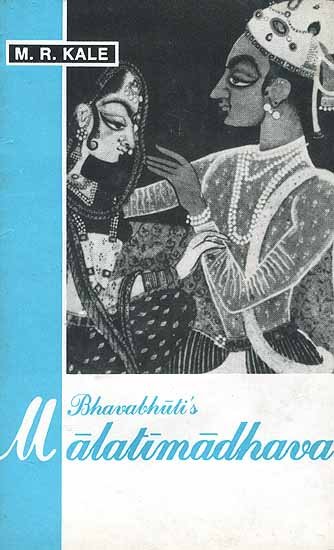Malatimadhava (study)
by Jintu Moni Dutta | 2017 | 52,468 words | ISBN-10: 8120813057 | ISBN-13: 9788120813052
This page relates ‘Subcastes and Candalas’ from the English study on the Malatimadhava of Bhavabhuti:—A Prakarana type of Drama in ten acts revolving around the love-story of Malati (from Padmāvatī) and Madhava (from Vidarbha). This study discusses the history of its author and the literary, social, religious, historical and cultural aspects of the Malatimadhava.
Part 1.4 - The Subcastes and Caṇḍālas
In earliar society, there were mainly four castes viz.,
The first three were settled as dvijātis.[1]
Due to anoloma and pratiloma marriages among these three castes there also developed several subcastes viz.,
Caṇḍāla:
In the Mālatīmādhava, along with these four castes Bhavabhūti presents one subcaste namely Caṇḍāla. In the Cāndyogya Upaniṣad, the Caṇḍāla is ranked with the dog and the bear.[3] According to Manu the Caṇḍāla is a varṇasaṃkara i.e. mixed caste and people belonging to this caste were lower or worse than Śūdra and he is produced from a Śūdra father and a Brāhmaṇa mother.[4] The Caṇḍāla is an out caste.[5] Further he says that Caṇḍāla is the lowest of mortals. [6] The Caṇḍāla is wicked in his deed and killer of animals.[7]
In the Bhavabhūti’s Mālatīmādhava also, Aghoraghaṇṭa and Kapālakuṇḍalā were found as Caṇḍālas. They were merciless in killing the persons by various weapons.[8] Kapālakuṇḍalā was the disciple of Aghoraghanta and was a skull bearing practitioner of charms, who possessed miraculous power.[9] They were engaged in sinful acts. In the 5th act Kapālakuṇḍalā was found in the temple of Karālā nearby the cremation ground who gathered a special collection of materials for the worship of goddess Karālā by the command of her preceptor Aghoraghaṇṭa, for the attainment of miraculous power by incantations.[10] They prepared Mālatī as a victim to worship goddess Karālā[11] . Thus, Aghoraghaṇṭa raised his sword to kill Mālatī by offering Mālatī to the divine Karālā at the commencement of the rite for making mantras efficacious.[12]
As found in the Manusmṛti, the dwellings of Caṇḍālas are outside the villiage, they must be made untouchable and their dress is garments of the dead body.[13] As it has been found that Kapālakuṇḍalā was a night ranger, she had come from the Śrīparvata and she dwelt in a forest.[14] Kapālakuṇḍalā and Aghoraghaṇṭa wore the garments of the dead body.[15]
During Bhavabhūti’s time, besides these four castes viz. Brāhmaṇa, Kṣatriya, Vaiśya and Śūdra the reference of Caṇḍālas was also found verily in dealing with horrible deeds.
Footnotes and references:
[1]:
Medhātithī on Manusmṛti, V.168
[2]:
Ibid.,X.13
[3]:
tad ya iha ramaṇīyacaraṇā abhyāso ha ytte ramaṅīyāṃ yonimāpadyoran brāhmaṇayoniṃ va kṣatriyāyoniṃ vā vaiśyayoniṃ vātha ya iha kapūyacaraṇā
abhyāśo/
ha yatte kapūyāṃ yonimāpadyeran śvayoniṃ vā sūkarayoniṃ vā caṇḍālayoniṃ vā /Chāndogya Upaniṣad,V.10.7
[4]:
Manusmṛti, X.12
[5]:
Ibid.,X.16
[6]:
caṇḍālaśca narādhamaḥ /
Ibid.,X.26
[7]:
kravyādbhiśca hatasyānyaiścaṇḍālādyaiśca dasyubhiḥ /
Ibid., V.131
[8]:
vyāghrāghrātamṛgīkṛpākulamṛganyāyena hiṃsāruseḥ /
pāpa prāṇyupahāraketanajuṣaḥ prāptoasi me gocaram //
so‟ahaṃ prāgbhavataiva bhūtajananīmṛdhnomi khaṅgāhoti /
chinnaskandhakavandha randrarudhiraprāgbhārāniḥsyamdinā //
Mālatīmādhava, V. 29
[9]:
muṇḍadhāriṇo‟ghoraghaṇṭanāmadheyasyāntevāsinī mahāprabhāvā
kapālakuṇḍalā/
Ibid.,I.p.19
[10]:
[11]:
tataḥ praviśato devatārcanavyagro kapālakuṇḍalāghoraghaṇṭo kṛtavadhyaciḥnā mālatī ca /
Ibid.,p.108
[12]:
(śastramudyamya) : yadastu tadastu vyāpādayāmi /
cāmuṇḍe bhagavatī mantrasādhanādā /
vudiṣṭāmupanihitāṃ bhajasva pūjām //
Ibid.,V.p.112
[13]:
caṇḍāla śvapacānāṃ tu vahira grāmāt pratiśrayaḥ /
apapātrāśca kartavyā dhanam eṣāṃ śva gardabham /
Manusmṛti, X.51 vāsāṃsi mṛtacailāni bhinnabhāṇḍeṣu bhojanam /
Ibid., X.52
[14]:
